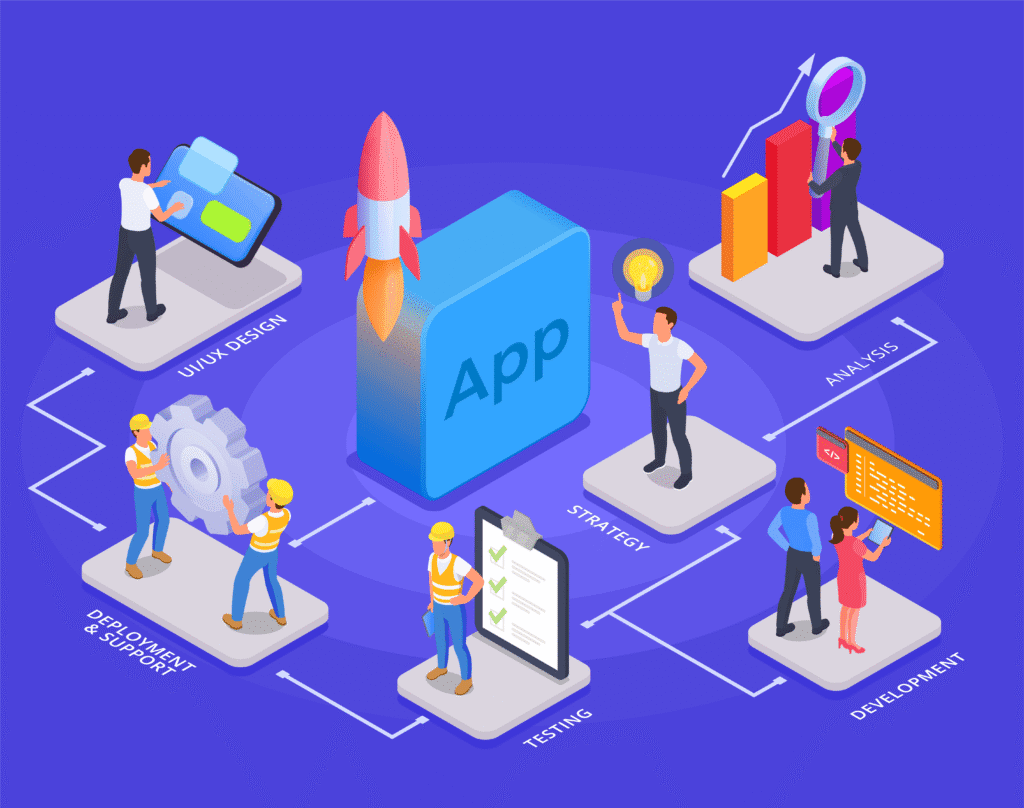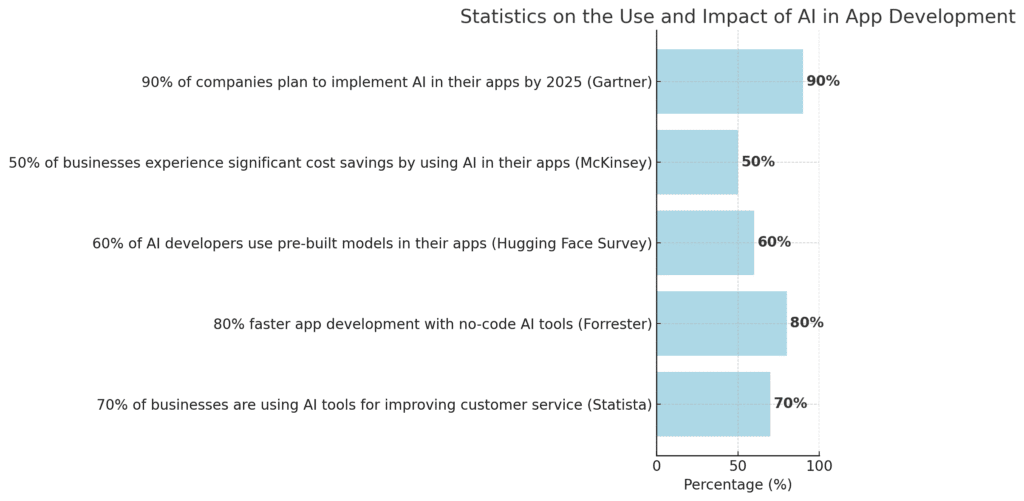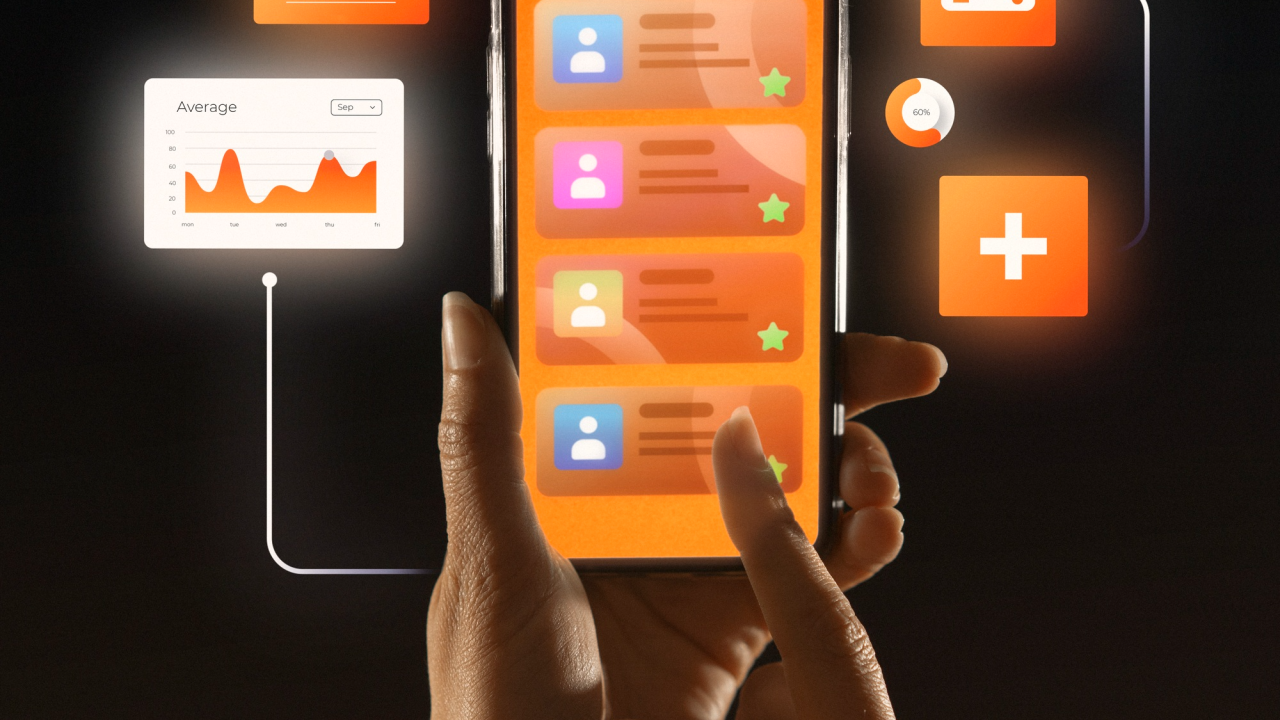
Introduction: AI-Powered Apps Are the Future
Artificial Intelligence (AI) is rapidly changing the way we interact with technology. From virtual assistants like Siri to recommendation systems on streaming platforms like Netflix, AI is becoming an integral part of mobile and web applications. If you’ve ever wanted to build your own AI-powered app but didn’t have the technical expertise, you’re in luck! Today, building an AI app is more accessible than ever before.
Thanks to the rise of no-code and low-code platforms, anyone—whether you’re an entrepreneur, a small business owner, or a developer—can now build sophisticated AI-powered apps without needing to write complex code. In this blog, we will walk you through how to build an app with AI using simple tools that require no advanced programming skills.
Launch Your App Today
Ready to launch? Skip the tech stress. Describe, Build, Launch in three simple steps.
BuildWhy Build an AI-Powered App?
Building an AI-powered app can give you a competitive edge in a variety of ways:
- Personalized User Experiences: AI can tailor content, recommendations, and responses to each user’s preferences.
- Automation of Repetitive Tasks: Automate workflows like customer support, data analysis, and content generation, saving time and resources.
- Advanced Functionality: Add capabilities like natural language processing (NLP), image recognition, and predictive analytics to your app.
- Data Insights: AI helps you analyze large datasets quickly, enabling you to make data-driven decisions.
Key Steps to Build an AI-Powered App

Step 1: Define Your App’s Purpose
The first step is to clearly define the purpose of your AI-powered app. AI can be applied in various ways, depending on your app’s focus. Some common AI features include:
- Chatbots: Build an app that uses natural language processing (NLP) for automated customer service.
- Image Recognition: Use computer vision to recognize and analyze images within your app.
- Recommendation Systems: Use AI to recommend products, services, or content based on user behavior.
- Predictive Analytics: Build an app that can forecast trends, sales, or user behavior.
Understanding your app’s purpose will guide your decisions on what AI features to implement.
Step 2: Choose the Right AI Tools and Platforms
To build your app, you’ll need tools that provide the AI functionalities you want. Fortunately, many platforms now offer no-code AI tools that are easy to use. Here are some platforms you can consider:
1. Google Teachable Machine
- What it Offers: Google’s Teachable Machine allows you to create machine learning models for image, sound, and pose recognition without writing a line of code.
- Use Case: Perfect for building apps with AI capabilities for image and sound recognition.
- How to Get Started: Visit Teachable Machine and upload your training data (images or sounds). Once your model is trained, export it and integrate it into your app.
2. Dialogflow by Google Cloud
- What it Offers: Dialogflow is a platform for building chatbots and voice assistants using natural language processing (NLP).
- Use Case: Ideal for building apps with AI-powered chatbots for customer support, virtual assistants, or personal services.
- How to Get Started: Visit Dialogflow and create a new agent (chatbot). Define intents, entities, and responses, and integrate it with your app.
3. Runway ML
- What it Offers: Runway ML provides AI tools for creative projects, offering pre-trained models for text generation, image synthesis, and video editing.
- Use Case: Ideal for building AI-powered apps that require creative input, like content generation or video effects.
- How to Get Started: Visit Runway ML, sign up, and start using pre-trained models for your app development.
4. IBM Watson
- What it Offers: IBM Watson provides AI models for text analysis, language translation, image recognition, and more.
- Use Case: Best for building data-driven AI apps such as sentiment analysis, predictive analytics, or image processing.
- How to Get Started: Visit IBM Watson and explore the available AI services. Choose the tools that match your app’s purpose and integrate them using the provided APIs.
Step 3: Build Your App Using No-Code Platforms
Once you have the AI functionality in mind, it’s time to build your app using a no-code or low-code platform. Here are a few popular platforms to help you:
1. Bubble
- Overview: Bubble is a no-code platform that allows you to create fully functional web applications with drag-and-drop features. You can easily integrate AI models through APIs or plugins.
- How to Get Started: Sign up on Bubble, and start designing your app using the visual interface. You can integrate your AI functionality by using API connectors to link with services like Dialogflow or Teachable Machine.
2. Adalo
- Overview: Adalo is another no-code platform that lets you build mobile apps with AI functionality. It also supports integration with external AI services.
- How to Get Started: Visit Adalo, create a new project, and design your app using the intuitive interface. You can add AI features by using APIs or plugins.
3. Appgyver
- Overview: Appgyver is a powerful no-code platform for building both web and mobile applications. It supports AI features through integrations with third-party APIs and AI tools.
- How to Get Started: Go to Appgyver, sign up, and start building your app using the drag-and-drop interface. Use the platform’s API capabilities to connect with AI models.
Step 4: Integrate AI Models into Your App
After selecting a no-code platform, the next step is to integrate AI models into your app. This can be done by connecting your app to APIs of the AI tools you’ve selected (e.g., Dialogflow for chatbots, Teachable Machine for image recognition). Most no-code platforms support API integrations, which makes the process simple.
For example, if you’re building a chatbot with Dialogflow, you can integrate the bot by linking your Dialogflow agent to your app via API. Similarly, if you want to use Teachable Machine, you can upload your trained model and call it from your app.
Step 5: Test and Deploy Your App
Once your app is built, it’s important to test it thoroughly to ensure that the AI features are working as expected. Here’s how you can do that:
- Test AI Features: Ensure that the AI functionalities (e.g., chatbot conversations, image recognition, etc.) are working smoothly.
- User Testing: Test the app with real users to get feedback on the user experience.
- Deploy Your App: Once everything is working, you can deploy your app using the platform’s built-in deployment features. For web apps, platforms like Bubble or Adalo offer one-click deployment to the web.
Step 6: Monitor and Improve Your App
After launching your AI-powered app, it’s essential to monitor its performance. Use analytics to track how users interact with your app, and continually refine your AI models based on real-world data. For instance, if you’re using a recommendation engine, the more data it receives, the better it will get over time.
Conclusion: Building AI Apps Is Easier Than Ever
Building an AI-powered app no longer requires deep technical expertise, thanks to the availability of free AI tools and no-code platforms. With tools like Teachable Machine, Dialogflow, Runway ML, and IBM Watson, you can easily integrate AI into your app, and platforms like Bubble, Adalo, and Appgyver allow you to create and deploy apps without writing code.
Whether you’re looking to build a chatbot, an image recognition app, or an intelligent recommendation engine, AI is within reach. Start building your AI-powered app today and bring your ideas to life with ease!
FAQs on Building AI Apps
1. Do I need coding skills to build an AI app?
No, with no-code platforms, you can build AI apps without any coding experience.
2. How do I integrate AI features into my app?
You can integrate AI features by using APIs or pre-built models from services like Dialogflow, Teachable Machine, or IBM Watson.
3. What kind of AI features can I add to my app?
You can add features like chatbots, image recognition, predictive analytics, sentiment analysis, and more.
4. How much does it cost to build an AI-powered app?
Many platforms offer free plans with core features. However, advanced AI features or scalability options may require upgrading to a paid plan.
5. Can I scale my AI app later?
Yes, most platforms allow you to scale your app as needed, with paid plans offering additional resources and AI capabilities.
ChatGPT can m
Launch Your App Today
Ready to launch? Skip the tech stress. Describe, Build, Launch in three simple steps.
Build




